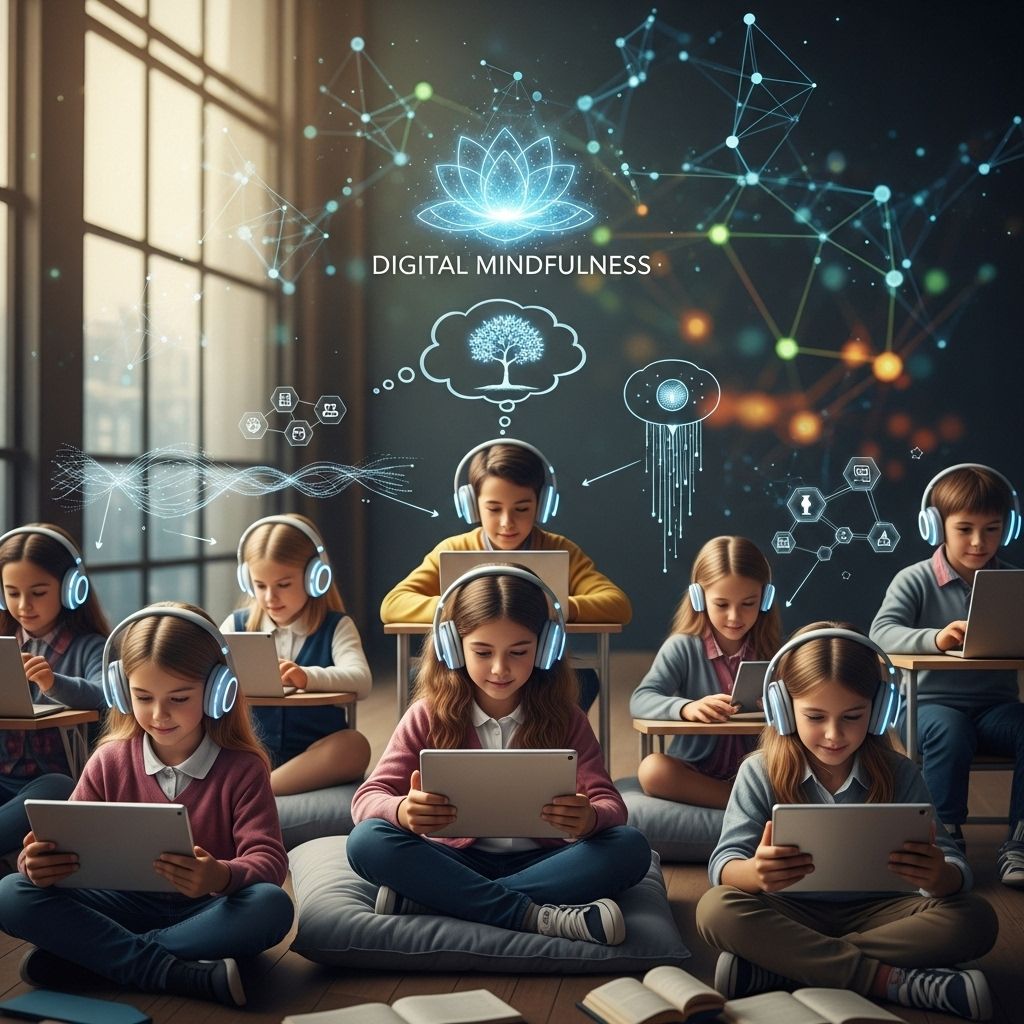Digital Mindfulness for Remote Learning Overload in K-12 Education
A few mindful minutes online can sharpen attention and calm racing thoughts.

Remote learning, while beneficial in many ways, can also lead to feelings of isolation and overwhelm for students. The shift to virtual classrooms has intensified the need for strategies that support mental health and well-being among K-12 students. Digital mindfulness emerges as a powerful tool in this context, offering a range of practices and tools tailored to the remote learning environment.
Understanding Digital Mindfulness
Digital mindfulness refers to the practice of being fully present and attentive in a digital context. This involves using digital tools and platforms to engage in mindfulness activities such as meditation, breathing exercises, and guided reflections. The goal is to enhance self-awareness, manage stress, and foster a sense of calm and focus, particularly in the midst of the challenges associated with remote learning.
Benefits of Mindfulness in Remote Learning
Integrating mindfulness into remote learning offers several benefits for students: –
Enhanced Focus:
Mindfulness helps students stay focused and attentive during virtual sessions, improving engagement and learning outcomes. –Stress Reduction:
Practices like meditation and deep breathing can alleviate anxiety and stress related to remote learning overload. –Improved Self-Regulation:
Mindfulness enhances students’ ability to regulate their emotions and behaviors, leading to better academic performance and personal well-being. –Increased Resilience:
Developing mindfulness skills can help students cope with the uncertainties and challenges of remote learning more effectively.Case Study: Mindfulness in Online Education
A study conducted at a Canadian online university highlighted the positive impact of mindfulness practices on students’ learning experiences. Participants reported improved self-regulated learning skills, enhanced intrinsic motivation, and better time management. These findings suggest that mindfulness can be a valuable complement to traditional educational strategies, particularly in remote settings.
Digital Mindfulness Tools and Platforms for K-12 Education
- DreamyKid: Offers a comprehensive platform with mindfulness and meditation tools suitable for students aged 3-17. It provides guided journeys and activities tailored for different age groups and needs, including those with ADHD and anxiety.
- Calm: Contains a robust suite of mindfulness resources, including reflection questions, scripts, and activities. It also provides a self-care guide specifically designed for teachers to manage stress and promote mindfulness in the classroom.
- Animated Digital Breathing Exercises: Available on Google Slides, these exercises provide interactive and engaging mindfulness activities for students. The accompanying video lesson, “Mindfulness Breathing Is Your Superpower,” educates students on the benefits of mindful breathing in managing stress.
Implementing Mindfulness in Remote Learning
Teachers can effectively integrate mindfulness into remote learning environments by: –
Incorporating Short Mindfulness Sessions:
Start or end virtual classes with brief meditation or breathing exercises to enhance focus and calmness. –Using Digital Tools:
Utilize platforms and apps designed for mindfulness, ensuring they are accessible and engaging for students. –Encouraging Self-Reflection:
Provide opportunities for students to reflect on their experiences and emotions, fostering self-awareness and emotional regulation.Challenges and Considerations
While digital mindfulness offers significant benefits, several challenges must be addressed: –
Accessibility:
Ensuring that all students have access to the necessary digital tools can be a barrier, particularly in areas with limited internet access. –Engagement:
Maintaining student engagement in mindfulness activities can be difficult, especially in virtual settings where distractions are common. –Cultural Sensitivity:
Mindfulness practices must be culturally sensitive and adaptable to different student backgrounds and needs.Future Directions
As remote learning continues to evolve, the integration of digital mindfulness will become increasingly important. Future research should focus on developing more accessible and culturally sensitive mindfulness tools, as well as understanding the long-term impacts of mindfulness on student well-being and academic achievement.
Frequently Asked Questions (FAQs)
Q: What are some common mindfulness practices for remote learning?
A: Common practices include mindful breathing exercises, short meditations, body scan meditations, and self-reflection activities.
Q: How can teachers encourage students to use mindfulness tools at home?
A: Teachers can encourage students by providing resources and guides for families, offering incentives for regular practice, and integrating mindfulness into homework assignments.
Q: What are some popular digital mindfulness apps for K-12 students?
A: Popular apps include Calm, DreamyKid, and Insight Timer, which offer a variety of guided meditations and mindfulness activities tailored for different age groups.
Conclusion
Digital mindfulness is a valuable resource for addressing the challenges of remote learning in K-12 education. By leveraging digital tools and platforms, educators can promote student well-being, enhance engagement, and support academic resilience. As digital education continues to evolve, the role of mindfulness in fostering a supportive and inclusive learning environment will remain essential.
References
- https://www.techlearning.com/how-to/5-mindfulness-apps-and-websites-for-k-12
- https://digscholarship.unco.edu/cgi/viewcontent.cgi?article=1069&context=joci
- https://www.teacherspayteachers.com/Product/Digital-Mindfulness-Breathing-Exercises-Video-SEL-Distance-Learning-Lesson-5420849
- https://pmc.ncbi.nlm.nih.gov/articles/PMC9885932/
- https://www.edutopia.org/article/translating-mindfulness-distance-learning/
- https://www.k12.com/advice-tips-inspiration/podcasts/wiwtk-podcast/how-can-we-incorporate-mindfulness-into-the-classroom/
- https://www.commonsense.org/education/lists/top-tools-for-building-mindfulness-in-the-classroom
- https://www.panoramaed.com/blog/better-kids-and-panorama
- https://mindfuleducation.com
- https://www.cedtech.net/download/technological-self-efficacy-and-mindfulness-ability-key-drivers-for-effective-online-learning-in-14336.pdf
Read full bio of Sneha Tete












